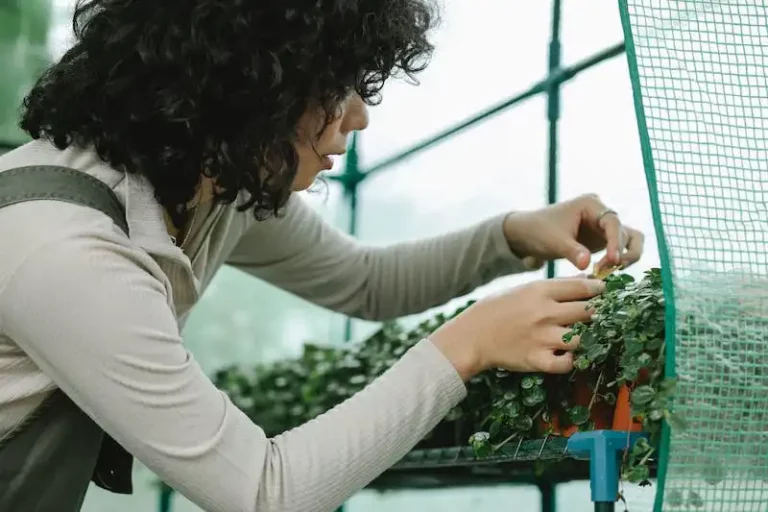Arugula, also known as rocket or roquette, is a leafy green vegetable that is a member of the Brassicaceae family. It is native to the Mediterranean region and is popular in Italy, where it is known as “rucola”. Arugula has a long history, dating back to the Roman era, and its name comes from the Latin word “eruca” which means ‘colewort’ or ‘cabbage’.
Arugula is a deep green, leafy vegetable with long, slender stems and deeply indented leaves. It has a slightly bitter and peppery flavor, often described as a cross between mustard and radish. The spiciness of arugula depends on the maturity of the leaves, with younger leaves being more mild and tender, while older leaves are stronger and more peppery in taste.
Arugula is incredibly versatile and can be used in a variety of dishes. Its peppery flavor pairs well with other ingredients like citrus fruits, Parmesan cheese, tomatoes, and olive oil. Arugula is commonly used in salads, sandwiches, pasta dishes, and even as a topping for pizza. Its leaves are delicate and tender, making it a great addition to any meal.
Arugula is a heat-tolerant plant and grows well in warm climates. It prefers full sunlight but can tolerate some shade. Arugula is a fast-growing plant and can be harvested from seed in as little as 3 to 5 weeks. It is a cool-season crop and does best when planted in early spring or in the fall. However, it can be grown year-round in mild climates.
When selecting arugula at the grocery store or farmers market, look for leaves that are bright green and crisp. Avoid leaves that are wilted or yellowing, as this is a sign of age. Arugula should be stored in a plastic bag in the refrigerator and used within a few days to keep it fresh. If the leaves start to wilt or become tough, they can be revived by soaking them in ice water for a few minutes.
In conclusion, arugula is a flavorful and nutritious leafy green vegetable that is easy to grow and versatile in the kitchen. Whether you’re looking to add a tangy taste to your salad or a peppery kick to your pasta, arugula is sure to satisfy your taste buds. So why not give it a try and explore the wonderful world of arugula today?
Three Types of Arugula
Arugula, also known as rocket or rucola, is a tasty and versatile leafy green that is tolerant of a variety of growing conditions. There are three main types of arugula: Bellezia, Astro, and Wildfire.
The Bellezia variety of arugula is a milder version of the greens and is perfect for those who prefer a less peppery taste. It has smaller, narrower leaves and grows quickly, usually ready for harvest within just a few weeks. Fortunately, it can tolerate both cool and warm temperatures, making it an ideal choice for growing in a variety of climates.
Astro arugula, sometimes referred to as ‘arugula’ or ‘olive rocket’, has broader leaves and a stronger, more pungent flavor compared to the Bellezia variety. It grows quickly and can be harvested within just a few weeks. Astro arugula is a great addition to salads, pasta dishes, and sandwiches.
The Wildfire variety of arugula, also known as Diplotaxis tenuifolia, is a wilder and spicier type of arugula. It has deeply lobed leaves and a stronger flavor, making it a popular choice for those who enjoy a peppery taste. Wildfire arugula can be harvested once the leaves reach a desirable size, but be careful as it tends to bolt quickly, meaning it goes to flower and produces fewer edible leaves.
When growing arugula, understanding the differences between these three types can help you choose the right variety for your needs. Whether you prefer a milder taste, a stronger flavor, or a wilder and spicier option, there is an arugula variety that will suit your taste buds.
Everything You Need To Know About Arugula
Arugula, also known as rocket or rucola, is a leafy green vegetable that is popular in many cuisines. It has a distinct peppery taste that really adds a kick to dishes. In fact, the name “arugula” comes from the Latin word “eruca,” which means “rocket.”
Arugula is part of the Brassicaceae family, which includes other leafy greens like mustard and kale. It is often compared to mustard greens because of their similar spicy flavor. However, arugula has a milder taste and is less bitter than mustard greens.
The history of arugula dates back to the Mediterranean region, where it was originally grown as a wild-type plant. It was then cultivated and brought to Europe by the Romans. Today, it is grown and enjoyed all over the world.
Arugula is a versatile vegetable that can be used in a variety of dishes. Its peppery taste works well in salads, sandwiches, pasta dishes, and even pizza. You can also use arugula as a garnish or as a base for pesto sauce.
One of the advantages of arugula is that it is very nutritious. It is packed with vitamins A, C, and K, as well as minerals like calcium and iron. Arugula also contains isothiocyanates, which are compounds that have anti-cancer properties.
Arugula is a relatively easy vegetable to grow, and it thrives in cooler weather. It can be grown from seeds or transplants, and it prefers well-draining soil. Arugula is a quick-growing plant, and you can start harvesting the leaves just three to four weeks after planting.
To store arugula, you can wrap the leaves in a paper towel and keep them in a plastic bag in the fridge. Arugula is best when used fresh, but it can last for up to a week when stored properly.
Whether you call it arugula, rocket, or rucola, this leafy green vegetable is a delicious and nutritious addition to your meals. Its peppery taste adds a unique flavor, and its health benefits make it a great choice. So, next time you’re at the farmer’s market or grocery store, be sure to pick up some arugula and give it a try!
What is arugula
Arugula, also known as rocket, is a leafy green vegetable with a deep green color and a distinct peppery taste. It belongs to the Brassicaceae family and is closely related to mustard greens, kale, and cabbage. Arugula has a slightly bitter and nutty flavor, and its leaves are often smooth and elongated in shape.
Arugula plants are relatively easy to grow and can be found in both the wild and cultivated forms. In the wild, arugula plants grow in open areas with lots of sunlight, such as fields and meadows. In the garden, they can be grown from seeds and are generally ready to harvest in about three to four weeks.
Arugula is a popular ingredient in salads and is often used as a garnish or added to sandwiches for an extra kick of flavor. It can also be cooked and used in a variety of dishes, such as pasta, pizza, and soups.
One advantage of arugula is that it can be easily grown at home in a garden or in a container on a balcony. It requires regular watering and can be harvested multiple times throughout the growing season.
Arugula is relatively high in vitamins A and K, as well as potassium and calcium. It is also a good source of antioxidants and has been associated with various health benefits, including improved digestion, reduced inflammation, and enhanced cardiovascular health.
When purchasing arugula from a grocery store, it is important to choose fresh and crisp leaves. Avoid any leaves that are wilted or have dark spots. Arugula is best stored in the refrigerator, where it can stay fresh for up to a week.
Although arugula is often used as a salad green, it can also be cooked. Sautéing or wilting arugula slightly reduces its spiciness, making it a milder addition to a dish. It can be enjoyed as a side dish or mixed with pasta for a quick and flavorful meal.
Overall, arugula is a versatile and nutritious vegetable that can add a pop of flavor to many dishes. Whether enjoyed raw or cooked, its distinct taste and various health benefits make it a popular choice among food enthusiasts.
- Arugula has a peppery taste.
- It belongs to the Brassicaceae family.
- Arugula can be grown from seeds in a garden.
- It is ready to harvest in about three to four weeks.
- Arugula is commonly used in salads and as a garnish.
- It can also be cooked and used in various dishes.
- Arugula is high in vitamins A and K, potassium, and calcium.
- It has several health benefits, such as improved digestion and reduced inflammation.
- When buying arugula, choose fresh and crisp leaves.
- Store arugula in the refrigerator for up to a week.
The history of arugula
Arugula, also known as rocket or rucola, has a rich and fascinating history. It is believed to have originated in the Mediterranean region, particularly in Southern Europe and Western Asia, where it was first cultivated around 2,000 years ago. Arugula belongs to the Brassicaceae family, which includes other popular vegetables like broccoli, cabbage, and mustard.
The wild variety of arugula, known as Eruca selvatica or Diplotaxis tenuifolia, is native to the region and can still be found growing naturally in many areas. In ancient times, it was highly prized for its pungent and peppery flavor, as well as its medicinal properties. Arugula was often used as a natural remedy for various ailments, including indigestion and heartburn.
Arugula has a distinctive appearance, with long, slender leaves that are shaped like an elongated oval or a lance. Its leaves are dark green and deeply serrated, adding to its unique visual appeal. Arugula plants can grow up to two feet tall and produce small white flowers that eventually turn into seed pods.
Arugula has several different varieties, each with its own unique flavor profile. The most common type is Eruca sativa, which is sometimes referred to as ‘olive rocket’ due to its similarity in taste to olives. Another popular variety is Diplotaxis erucoides, or ‘wild arugula’, which has a stronger, more peppery flavor.
Arugula is a versatile and nutritious leafy green vegetable that is enjoyed in many different cuisines around the world. It can be used in a variety of dishes, both raw and cooked. Its peppery and tangy flavor pairs well with other ingredients, adding a vibrant and refreshing taste to salads, pasta dishes, sandwiches, and more.
One of the advantages of arugula is its tolerance to different growing conditions. It can be grown in both cool and warm climates, making it a popular choice for home gardeners. Arugula is a fast-growing vegetable that reaches maturity in just a few weeks, and it can be grown from seeds or seedlings. It can even be grown indoors in containers, allowing people to enjoy fresh arugula year-round.
Arugula is a nutrient-rich vegetable that is low in calories but high in vitamins A, C, and K, as well as folate and calcium. Its leaves are also a good source of antioxidants, which help protect the body against free radicals and may reduce the risk of chronic diseases.
In conclusion, arugula has a long and storied history dating back thousands of years. Whether you know it as rocket, rucola, or arugula, its name is synonymous with bold and unique flavors. Today, arugula has become a popular ingredient in grocery stores and restaurants worldwide, where it is cherished for its taste and nutritional benefits. So next time you’re planning your dinner, give arugula a try and explore the many delicious ways it can enhance your meals.
| Grocery Tips |
|---|
| When buying arugula from the grocery store, look for leaves that are vibrant in color and crisp in texture. Arugula leaves should be dark green and free from discoloration or wilting. |
| Arugula has a peppery and tangy taste, so it pairs well with savory and acidic flavors. Try using it in salads, sandwiches, stir-fries, or even as a pizza topping. |
| Arugula can sometimes have a slightly bitter taste, especially when it is matured. If you prefer a milder flavor, look for younger and smaller arugula leaves. |




